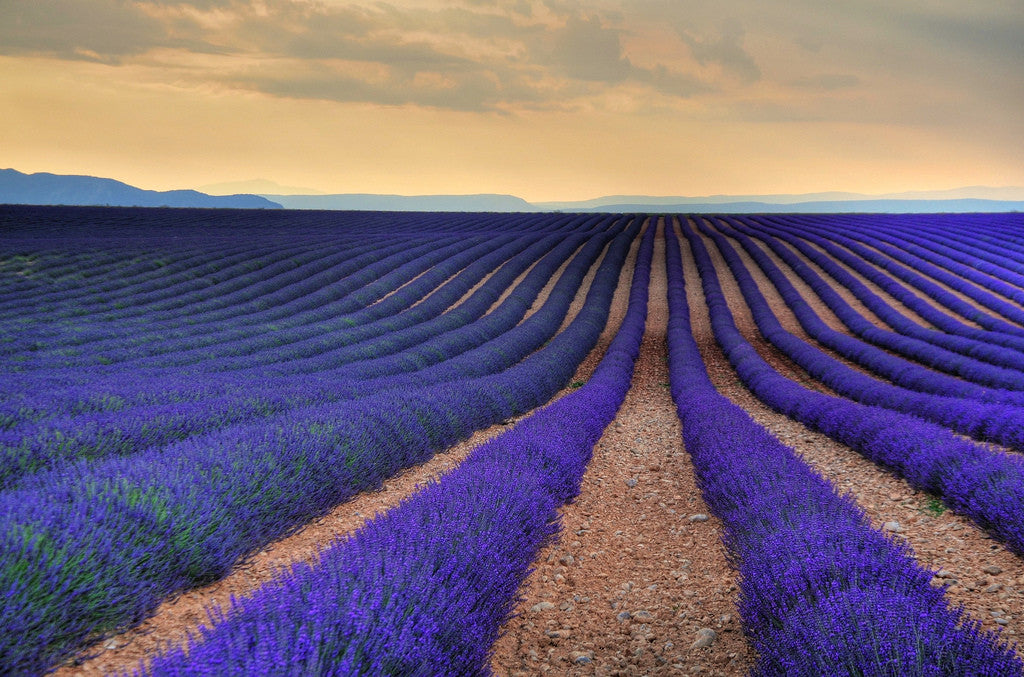We are excited to introduce our weekly blog "Raw Material Monday"! The purpose of this blog is to educate the reader about the benefits and origins of one of our ingredients every week. We pride ourselves in using high quality natural ingredients, and this is our way of explaining why we have chosen specific ingredients individually.
Our first ingredient has been a very popular plant for over 2000 years, lavender.
It is believed that lavender's origin stems from the Mediterranean, Middle East, and India, some 2,500 year ago. Although this flowering plant was known for its beauty, its floral fragrance and multiple uses enhanced its popularity over the years. The Romans called it lavender, which is believed to come from the latin word "lavare" which means "to wash".
The uses of Lavender varied slightly within the ancient world. Egyptians made unguents with lavender, some of which were discovered in jars upon the opening of Tutankhamen's tomb. Wealthy Egyptians would place solid cones of the unguent on top of their heads until it melted, covering their entire body in the lavender scented perfume The Greeks learned a lot from the Egyptians about aromatics, but had different opinions about the placement of the scent. The Greek philosopher Diogenes explained his opinion by saying “When you anoint your head with perfume, it flies away in the air and birds only get the benefit of it, whilst if I rub it on my lower limbs it envelopes my whole body and gratefully ascends to my nose." The ancient Romans noticed the healing and antiseptic qualities of lavender, along with its ability to avert insects. Roman soldiers used lavender to dress wounds acquired throughout war. Furthermore, it was placed in sick rooms to sweeten the air, and burned during religious ceremonies.
Fast forward to the Middle ages in England, where Queen Elisabeth used lavender in tea to treat her migraines and as a perfume. She encouraged England to develop lavender farms, and shortly after lavender entered the world of perfumed soap, and water for bathing.
Lavender played a huge part during the Black Plague in the 17th century. It was incorporated in most herbals as a cure all. Prices of these herbals were at an all time high, as lavender was thought to protect against the pestilence known as the Black Death.
Queen Victoria was also a lover of lavender. During the Victorian era it was used to repel insects, treat head lice, as a perfume, used to wash walls and furniture, and pressed between sheets with linen presses. The use of lavender was very popular with woman during this time. Unfortunately its overuse in the early 20th century caused it to be associated with old ladies, crippling its popularity. The decline in popularity, along with increasing land prices nearly killed all of the lavender oil production during this time.
Rene Gattefosse, one of the founders of modern aromatherapy, confirmed its healing values after burning his hand in a lab. Using lavender oil as a treatment, the pain faded, and the burn quickly healed without infection or scarring. This finding led to the use of lavender in World War I to dress wounds when medical supplies were scarce.
"Today it is used to induce sleep, ease stress and relieve depression. It is also used as a tea, to make compresses for dressing wounds and to apply to the forehead to relieve congestion of sinuses, headaches, hangovers, tiredness, tension and exhaustion." -Kitchenproject.com
Hope you enjoyed this look back at one of the most popular essential oils in history!
Sources: Lavendersense.com Kitchenproject.com organicfacts.com

